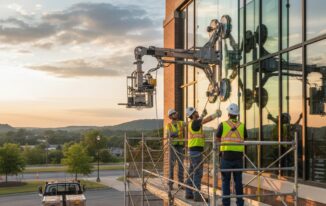When it comes to choosing the right barrier for flood protection or construction support, the durability of the structure is a key factor. The tallest L-Panel barriers are known for their increased height, ranging from 6 to 16 feet, which contributes to their stability and effectiveness. Thanks to their unique L-shape configuration, they provide a solid base against external forces.
The design of these barriers allows them to withstand heavy forces, especially in flood conditions. Unlike traditional wall solutions, L-Panel barriers incorporate an L-shaped base, which helps in distributing pressure more effectively. Their structural design makes them a solid choice for settings that demand increased durability and strength.
Understanding their distinct advantages can help you decide if they fit your requirements better than conventional wall solutions.
Comparison of Durability
When comparing the durability of the tallest L-panel barriers with traditional wall solutions, there are several factors to consider. These include the composition and longevity of the materials used, their capacity to withstand impacts, and their maintenance needs and costs over their lifecycle.
Material Composition and Longevity
L-panel barriers are often made of concrete or reinforced materials known for their strength and long lifespan. These materials resist weathering and corrosion, making them suitable for outdoor use over many years. Traditional walls might use materials like brick or wood, which can deteriorate faster, particularly when exposed to harsh weather conditions. Concrete, in particular, requires less frequent replacement or repairs compared to materials like wood and can endure both natural and human-made pressures more effectively. These properties make L-panel barriers a long-lasting solution.
Impact Resistance and Structural Integrity
L-panel barriers offer significant impact resistance. Their design often includes dense and reinforced construction, allowing them to absorb and dissipate energy from impacts, such as from vehicles or debris. This feature helps maintain their structural integrity even under substantial stress. On the other hand, traditional walls like those made of brick or wood might not handle significant impacts as well. They can crack, crumble, or even collapse under force, requiring immediate repairs or replacement. The ability of L-panels to withstand impacts keeps them in service longer with minimal damage.
Maintenance and Life-Cycle Costs
The maintenance of L-panel barriers generally involves inspecting for cracks or shifting and resealing joints if necessary. Their durable materials mean that they do not require frequent attention. Traditional walls may need more care, including repainting, resealing, or repairing of worn parts due to their susceptibility to environmental factors. The life-cycle costs for L-panel barriers tend to be lower because their materials and construction require fewer repairs and replacements over time. In summary, L-panels provide a cost-effective solution in the long run, balancing durability with reduced maintenance expenses.
Innovations in Barrier Technology
New technologies are changing how barriers are designed and installed. There is a focus on improving the structure and ease of putting these up, which can lead to better performance.
Advancements in L-Panel Design
L-Panels have evolved to be taller, reaching heights between 6 and 16 feet. This makes them a good choice for strong protection. One key feature is the “L” shape at the base. This design helps provide stability, especially when facing strong impacts or pressure.
Materials used in these barriers contribute to their effectiveness. Most barriers today use durable materials that can resist harsh weather and impact. These materials help make sure the barriers last longer without needing frequent replacements. They are well-suited for places that need solid, dependable protection.
Comparative Analysis of Installation Methods
Installing these barriers is different than traditional methods. L-Panel systems often require fewer parts, which can make installation faster. This is useful in emergency situations where time is important.
Another advantage is flexibility in installation. Panels can be stacked or positioned as needed, adapting to the landscape. This allows for easy customization depending on the area’s needs. Using fewer parts and simpler processes can also reduce labor costs, helping save money over time.
Ease of setup does not mean sacrificing safety. The secure fastening methods guarantee that the barriers stay put, even in challenging conditions. This provides peace of mind and reliability in their use.
Conclusion
When it comes to choosing between the tallest L-panel barriers and traditional wall solutions, consider their function and your needs. L-panel barriers provide a unique design with height options between 6 to 16 feet, making them suitable for significant flood protection.
Traditional walls often offer solid protection but may lack the flexibility and adaptability of L-panel designs.
Think about the environment and specific requirements of your project. For areas needing adjustable solutions, L-panel barriers can be more practical. Remember, the choice depends on the unique demands of each situation and the specific challenges you face.


